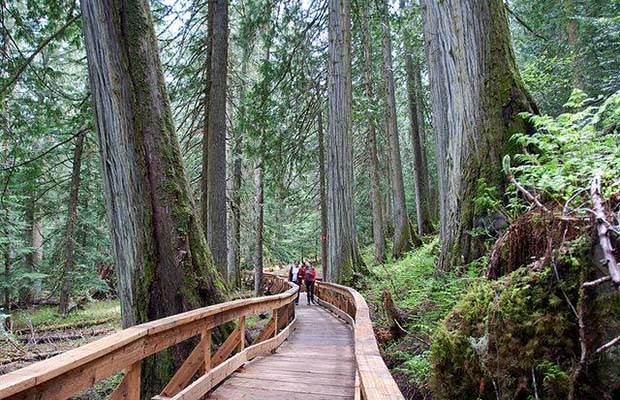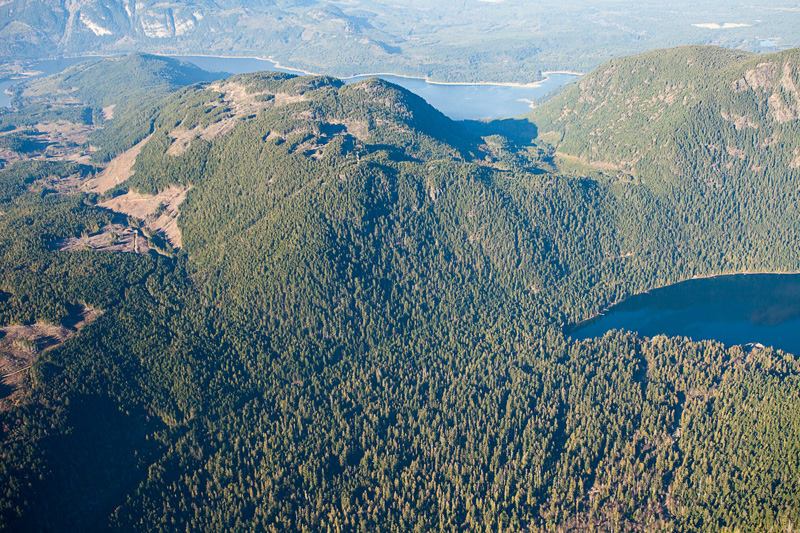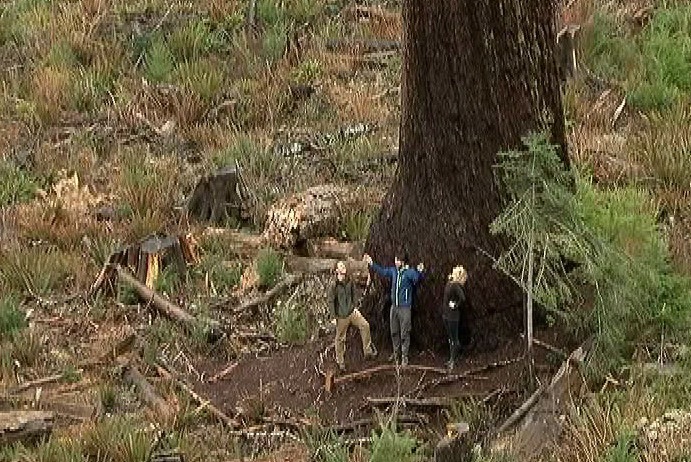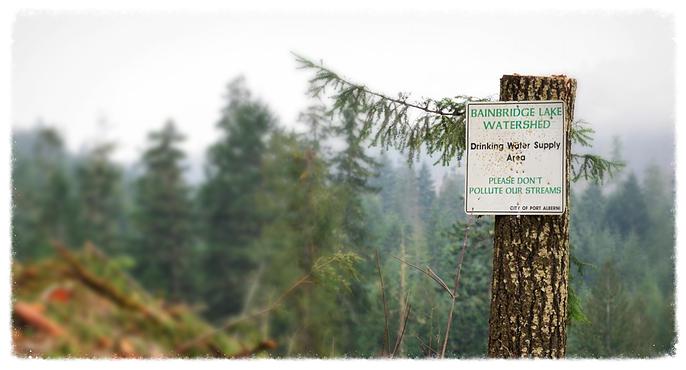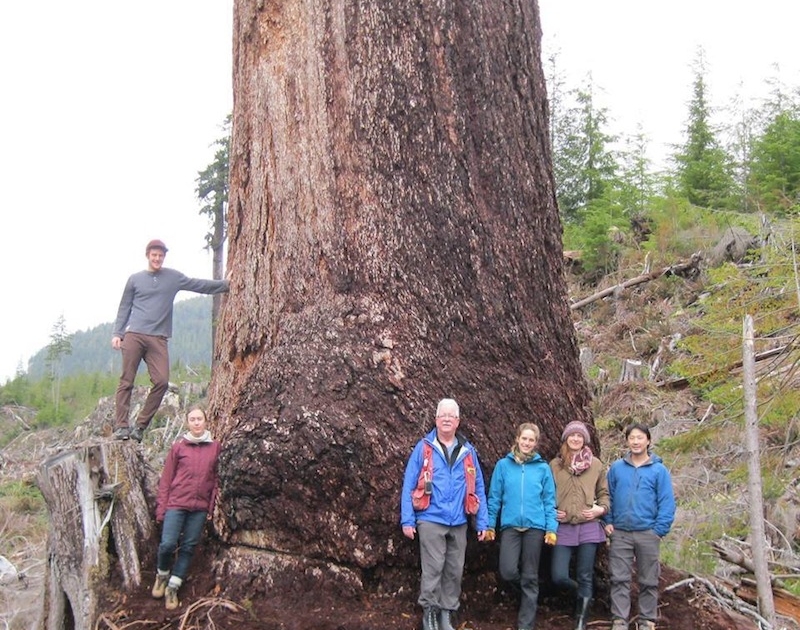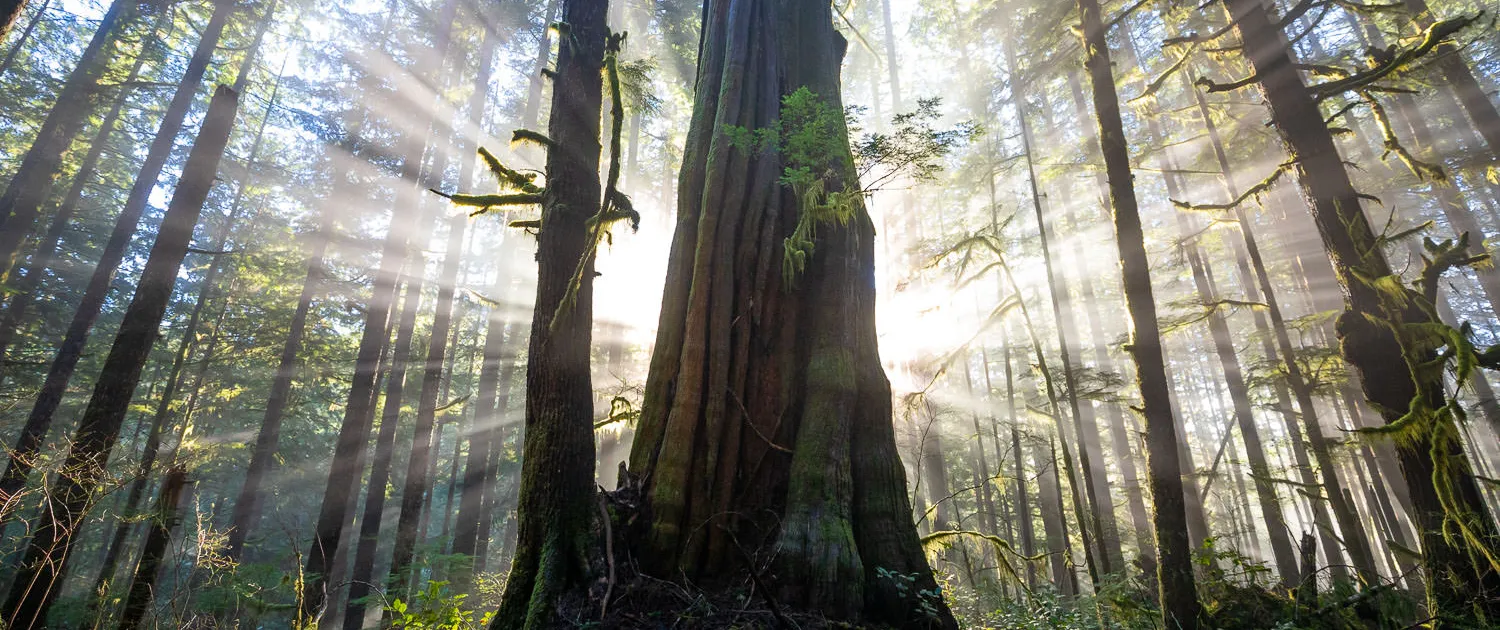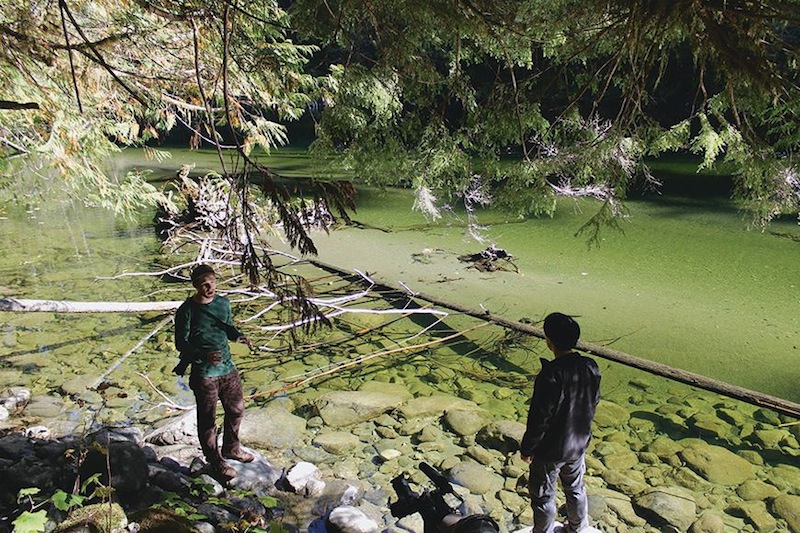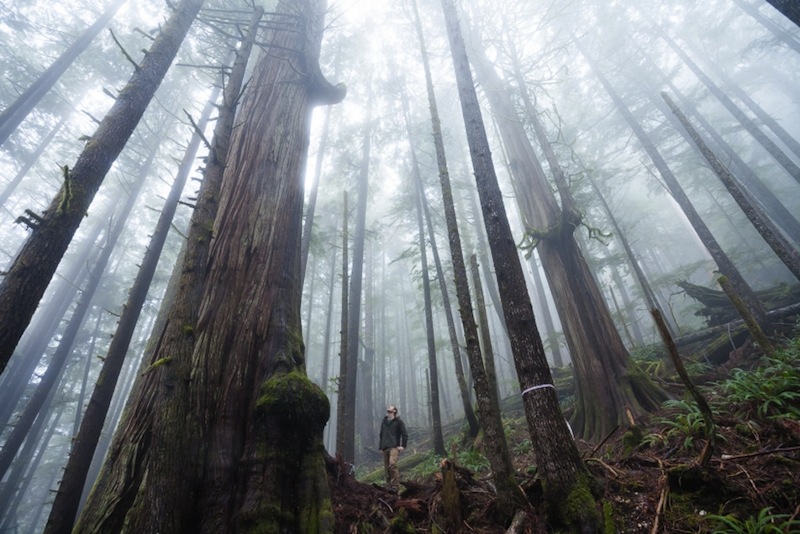High in the trees that have been growing in the Walbran Valley on Vancouver Island for up to 1,000 years, unique colonies of insects and invertebrates are thriving.
Carpets of soil which develop in the massive branches of the old-growth trees contain a plethora of species not found anywhere else on Earth and, since 1995, University of Victoria entomologist Neville Winchester has climbed more than 2,000 trees to document and catalogue this life in the tree-tops.
“These ancient forests are a repository of biodiversity,” said Winchester, who has had more than a dozen beetle mites, aphids and flies named after him and who is giving a public talk this Friday at 6:30 p.m. at the University of Victoria.
Together with UVic graduate students, Winchester has conducted one of the most extensive canopy research projects in North America, using ropes to scale trees the equivalent of 18-storeys high in the Carmanah and Walbran valleys.
“Then I take my mom’s bulb planter and take a sample of the suspended soils, which can be up to 60 centimetres in depth,” he said.
Despite overwhelming scientific evidence of unique ecosystems, Winchester is fighting a battle he thought had been won two decades ago when massive protests and demonstrations — part of the ‘War in the Woods’ that marked the 1980s and 1990s in B.C. — erupted over plans to log Carmanah Walbran.
At that time, Winchester was already doing canopy research and, when the government of the day responded to overwhelming public opposition and created the Carmanah Walbran Provincial Park, taking in 16,450 hectares of the old growth forest, he believed the war was over.
But now, part of the Central Walbran, just outside the park boundary, is under threat.
“I have the feeling that ‘here we go again.’ The same issues that were present then have surfaced again. They have been simmering for 20 years,” said Winchester, who finds it difficult to believe that politicians cannot look at the evidence and ban old-growth logging in the area.
“It’s greed, ignorance and arrogance. The scientific evidence is out there and it shows that these areas and these species are essential to protect biodiversity,” he said.
“By taking these trees down or by causing disruption you are committing species to go extinct… . Who would feel good about species going extinct just because we have mismanaged a resource? That’s the bottom line.”
The province has granted Surrey-based Teal Jones Group a permit for a 3.2-hectare cutblock east of Carmanah Walbran Park.
The cutblock is in the 500-hectare Central Walbran where, unlike the valley further south which is tattered with cutblocks, there is contiguous old-growth.
“It’s where our forests reach their most magnificent proportions,” said Ken Wu of the Ancient Forest Alliance.
“These are the classic giants. The biggest and the best — and some of the largest remaining tracts and finest old growth western red cedars are in areas such as Castle Grove, together with old-growth dependent species such as the Queen Charlotte goshawk and marbled murrelet,” Wu said, emphasizing the importance of these areas for tourism as well as biodiversity.
Business leaders in Port Renfrew have called on the B.C. government to immediately ban logging in the unprotected part of the Walbran Valley, saying tall tree tourism is now a multi-million dollar business and the highest value would come from stopping further logging of old growth trees.
At the heart of the problem is the original configuration of the park, said Torrance Coste of the Wilderness Committee.
A large chunk, surrounded by park and known colloquially as “The Bite,” was left without protection.
“It was a big concession to logging interests. When the park was laid down, there was no consensus or agreement from the environmental side,” Coste said.
Logging has already degraded old-growth on the south side of Walbran Creek, and environmentalists are not happy about Teal Jones plans for seven more cutblocks in that area, but the line in the sand is the approved cutblock on the north side of the river, said Coste, who wants to see the 486-hectare northern section of The Bite protected.
Protests started in the area in November, but, three weeks later, a court injunction restricted access and stopped protesters from interfering with logging operations.
On January 4, in a B.C. Supreme Court ruling, the injunction was extended until the end of March.
Coste said that, although he and the Wilderness Committee are named in the injunction, the role of the group has been to record and advocate, not participate in blockades.
However, he believes the injunction is heavy-handed and designed to discourage people from going into the Walbran Valley.
There is a great need for eyes on the ground and for British Columbians to let the province know that it is not acceptable to log some of the last low-elevation old-growth on southern Vancouver Island, he said.
A spokesman for the Ministry of Forests, Lands and Natural Resource Operations said in an e-mail that the ministry facilitated a meeting between the company and environmental groups in December to discuss how concerns could be addressed and another meeting is scheduled for next month.
The 3.2-hectare area that Teal Jones plans to log is part of a special resource management zone, which limits cutblock size to five hectares, and the company will use helicopter harvesting, meaning there will be no trails, roads or use of heavy equipment, the province said.
Conserving old growth and biodiversity are important parts of the province’s long-term resource management plans, said the spokesman.
“Of the 1.9 million hectares of Crown forest on Vancouver Island, 840,125 hectares are considered old growth, but only 313,000 hectares are available for timber harvesting,” the e-mail reponse read.
Coste remains hopeful that the province will have a change of heart.
“Nowhere else on Vancouver Island do we have the opportunity to protect such a large tract of contiguous old-growth,” he said.
“It’s an opportunity we absolutely can’t afford to miss.”
Winchester is hoping science will convince the government of the need for protection and he will publicly share findings from his years of research at a lecture Friday Jan.29, 6.30 p.m. at the University of Victoria Student Union Building Upper Lounge.
Admission is by donation with proceeds going to the Friends of Carmanah/Walbran campaign to protect the Central Walbran Ancient Forest.
Read more: [Original article no longer available]

